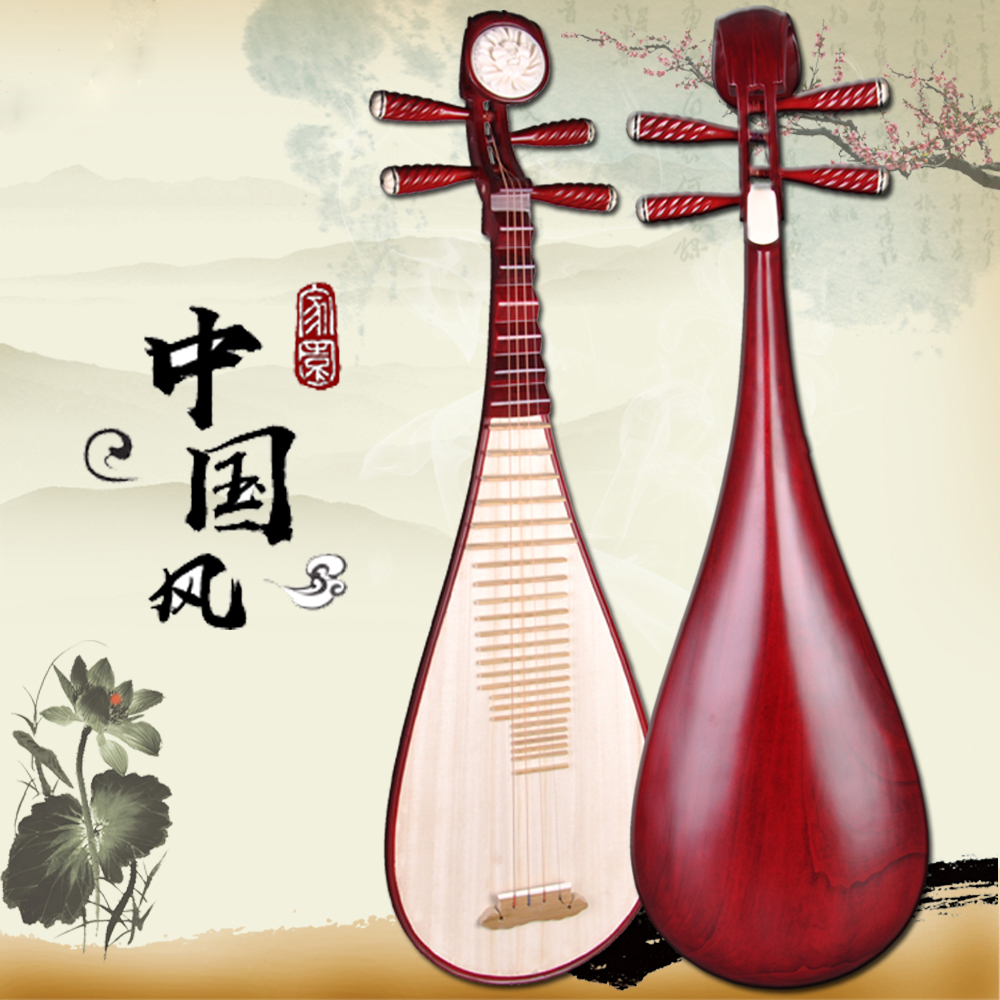Pipa Stringing Techniques
The pipa has four strings, which are called winding strings, old strings, middle strings, and sub strings from thick to thin. There are four strings on the head, two on each side of the pipa. When tying the strings, a certain string must be tied on a specified jig, that is, the winding string is tied to the winding jig, the old string is tied to the old jig, the middle string is tied to the middle jig, and the sub-string is tied to the middle string. On the Zixianzhen, it is not allowed to tie at will.

The upper end of the string is fastened to the Zhenzi, and the lower end is fastened to the cover of the hand. There are four string holes on the cover. When tying the string, first tie the lower end of the string to the cover hand. The method of wearing and tying on the hands can be divided into four actions:
1. First put the string in the string hole of the cover, and the end is about two inches away;
2. Rotate the end of the string behind the string;
3. Then turn the end of the string under the string body at the string hole;
4. Finally tighten the end of the string into a knot, insert it into the string hole, and pull the string body up.
The above is the method of tying the string.
Usually metal strings are used. The method of tying the metal string is to use the small circle at the lower end of the string. After the string is worn in the small hole in the cover, put the upper end in the small circle at the lower end, and then pull the upper end of the string upward and tie it on the jizi. There are three ways to tie strings using the small circle at the bottom:
1. Place the small circle at the lower end on the outside of the covering hand. This method is suitable for the pipa with a large distance between the string body and the fret (especially the 25th fret, etc.), which forms a "wave string";
2. Place the small circle at the bottom on the inside of the covering hand. This method is suitable for lutes with a small distance between the string body and the frets.
3. Press the lower end pocket of the string into the string body inside the cover hand. This way of tying can make the string body at the upper mouth of the hand not easily broken, and prolong the service life of the string. The intonation of the following part of the frets with this method is the same as the second method.
Note: On the same pipa, after using the first method, do not switch to the second method and vice versa. Because if you use it arbitrarily, in some of the following grades, the intonation is prone to a little error.
 渝公网安备 50010702504639号
渝公网安备 50010702504639号